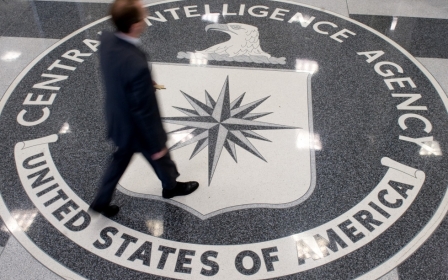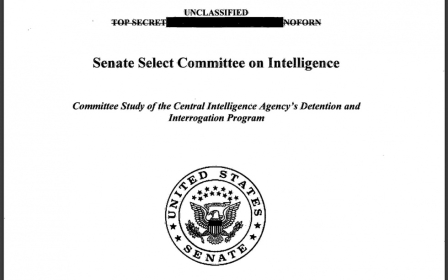Controversy follows long-awaited CIA torture report

NEW YORK, New York - A much-anticipated US Senate report on the CIA torture techniques was released on Tuesday, revealing that interrogations of suspected terrorists were “brutal and far worse” than was previously known.
A 500-page summary of the US Senate Intelligence Committee was quickly seized upon by human rights groups, who called for probes into former President George W. Bush and other White House officials accused of overseeing the post-9/11 torture scheme.
The report’s release came about after years of tussling between the CIA and the intelligence committee chairman Dianne Feinstein, a Democrat. It reignites a debate over what constitutes torture and whether torturing terrorists is permissible when it saves lives.
As well as concluding that CIA techniques on 119 detainees amounted to torture, a team of researchers working from 2009-12 found that roughing up inmates was “not an effective means of acquiring intelligence or gaining cooperation from detainees”.
Addressing the Senate on Tuesday, Feinstein said the CIA torture scheme was “far more brutal than people were led to believe” and “morally, legally and administratively misguided”. The US “should never again engage in these tactics”, she added.
The report details well-known CIA methods: waterboarding, forced nudity and slamming inmates against walls. Sleep deprivation was used on detainees for bouts of 180 hours – longer than a week – until some were left dazed and hallucinating, it says.
Five inmates endured “rectal rehydration”, an anal process that was undertaken without any medical need. Others were shackled in darkness, bombarded with load music, forced into “ice baths” and told that their family members would be executed.
One died from hypothermia while chained to a concrete floor in 2002. During one of his 83 waterboarding sessions, alleged al-Qaeda detainee Abu Zubaydah became “completely unresponsive with bubbles rising through his open full mouth”, researchers said.
“These harsh methods were not only inconsistent with our values as nation, they did not serve our broader counterterrorism efforts or our national security interests,” US President Barack Obama said in a statement after the report’s release.
The CIA scheme – known as the Rendition, Detention and Interrogation programme – took place during Bush’s presidency from 2002-07. It involved flying captured terrorism suspects to “black site” secret prisons for interrogation beyond US borders.
Bush ended many aspects of the program before leaving office, and President Obama swiftly banned the CIA’s so-called enhanced interrogation techniques (EITs) – which UN officials have deemed to be torture – following his inauguration in 2009.
The full, 6,700-page version of the report, which saw six million CIA files studied, will remain secret. The summary released this week omits sensitive details, including names of CIA staff and the foreign hosts of covert CIA detention centres.
While admitting that his agency made mistakes, director John Brennan defended using EIT’s in the wake of the 9/11 terror strikes – a period in which many Americans were fearful of anthrax plots and other sequel terror strikes on US soil.
“The intelligence gained from the programme was critical to our understanding of al-Qaeda and continues to inform our counterterrorism efforts to this day,” he said. It “did produce intelligence that helped thwart attack plans, capture terrorists, and save lives”.
Others warned that publishing graphic details of CIA torture against mostly-Muslim suspects would provoke a backlash. On Monday, the White House said security had been beefed up at foreign US facilities ahead of the report’s release.
“This release could endanger the lives of Americans overseas, jeopardize US relations with foreign partners, potentially incite violence, create political problems for our allies, and be used as a recruitment tool for our enemies,” said Marco Rubio and Jim Risch, two Republican senators.
Rights groups disagreed and called for prosecutions of those responsible – up to and including senior members of the Bush administration, including the president, Vice President Dick Cheney and Defence Secretary Donald Rumsfeld.
“Torture is being treated as if it’s either a good idea or a bad idea. In reality, it is a crime. When foreign governments use torture, we call on them to prosecute those responsible. The US should do no less,” Reed Brody, a researcher at Human Rights Watch, told Middle East Eye.
Anthony Romero, director of the American Civil Liberties Union, said Obama’s failure to prosecute anybody was “tantamount to issuing tacit pardons”.
“The CIA’s wrongful acts violated basic human rights, served as a huge recruiting tool for our enemies, and alienated allies world-wide,” said Romero. “The Department of Justice needs to appoint a special prosecutor to hold the architects and perpetrators of the torture program accountable for its design, implementation, and cover-ups.”
The UK-based rights group Amnesty International called on Italy, Lithuania, Romania, Sweden, Britain and Poland, which hosted a secret US prison at Stare Kiejkuty from 2002-05, to investigate their cooperation with the CIA.
“These countries must also facilitate genuine access to justice for all those subjected to them, and must provide the whole truth about the human rights violations committed in and around these operations,” said the group’s counter-terrorism expert Julia Hall.
Middle East Eye propose une couverture et une analyse indépendantes et incomparables du Moyen-Orient, de l’Afrique du Nord et d’autres régions du monde. Pour en savoir plus sur la reprise de ce contenu et les frais qui s’appliquent, veuillez remplir ce formulaire [en anglais]. Pour en savoir plus sur MEE, cliquez ici [en anglais].




